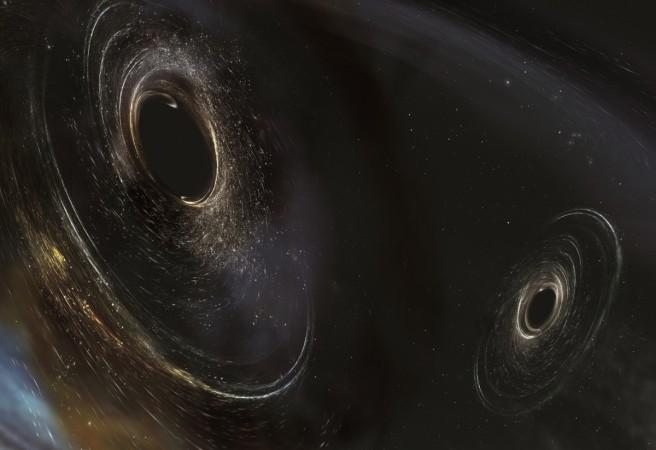
The Laser Interferometer Gravitational-wave Observatory (LIGO) in the US has successfully made its third detection of gravitational waves, marking yet another human achievement in the world of astronomy. The latest detection is expected to help astronomers better understand the invisible deep space ripples, which were first predicted by Albert Einstein more than 100 years ago.
LIGO made the third detection of gravitational waves, called GW170104, on January 4. And, like in the case of the previous detections, the newly observed waves also resulted from a collision of two black holes to form a larger black hole. According to astronomers, the new black hole has a mass about 49 times that of the sun.
LIGO, which is equipped with sensors that are extremely sensitive to gravitational waves passing through Earth, made the first observation of gravitational waves in September 2015, followed by the second detection in December 2015. The findings from the third detection are described in a new study, published in the journal Physical Review Letters on Thursday.
The three confirmed detections by LIGO, along with "one lower-confidence detection," has revealed a population of intriguing black holes that are much larger than what was known before, according to astronomers.
"This is the first time that we have evidence that the black holes may not be aligned, giving us just a tiny hint that binary black holes may form in dense stellar clusters," Bangalore Sathyaprakash of Penn State and Cardiff University, one of the editors of the new paper, said in a statement.

According to NASA, gravitational waves are incredibly fast ripples in space that can travel at the speed of light (about 299,338 kilometres per second), and would squeeze and stretch anything in their path as they pass by.
In addition to merger of black holes, gravitational waves can also be formed when a star exploded asymmetrically resulting in a supernova, or when two big stars orbit each other. As Einstein had predicted more than a decade ago, these waves would spread out like the ripples in a pond when you through a stone into it.
"It looks like Einstein was right—even for this new event, which is about two times farther away than our first detection," Laura Cadonati of Georgia Tech and the Deputy Spokesperson of the LIGO Scientific Collaboration (LSC), said. "We can see no deviation from the predictions of general relativity, and this greater distance helps us to make that statement with more confidence."
The latest study on the third detection of gravitational waves by LIGO has 40 authors from 11 Indian institutions, including IIT-Madras and Chennai Mathematical Institute.
Meanwhile, India is also reportedly working towards setting up its own LIGO observatory, which had already been approved by the cabinet in February last year.
Check out the video of an artist's animation of gravitational waves created by the merger of two black holes:















